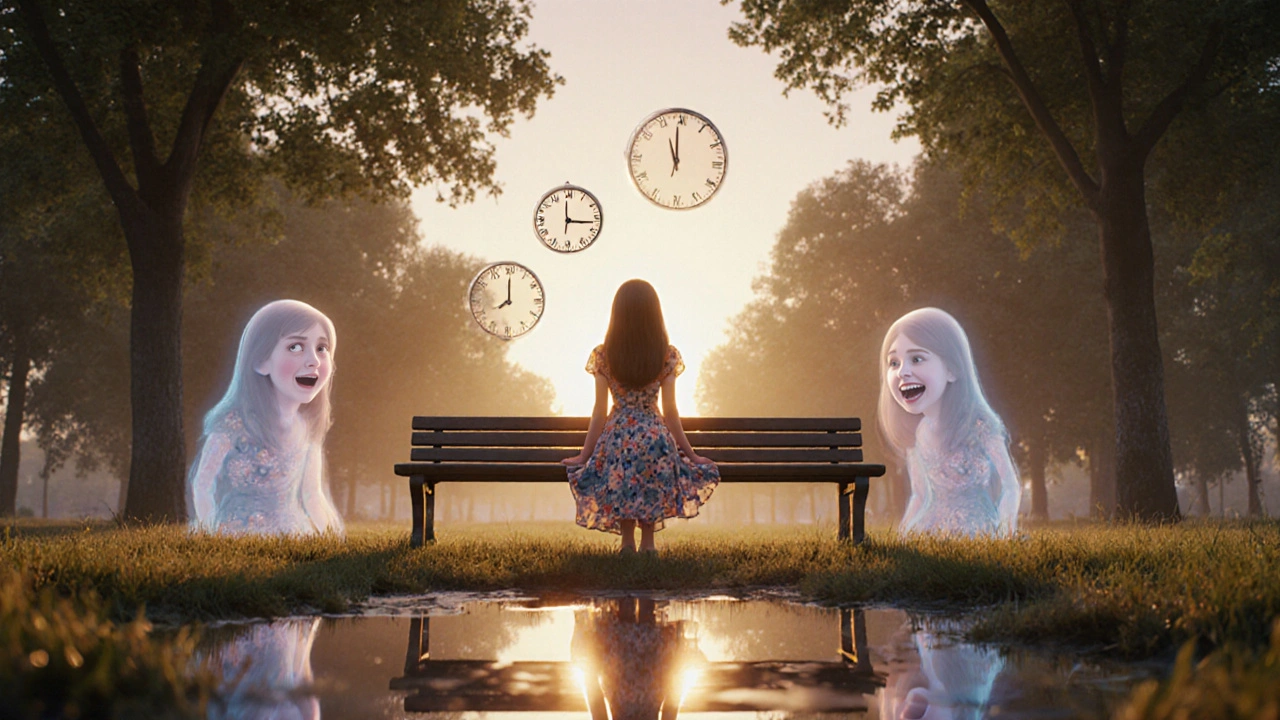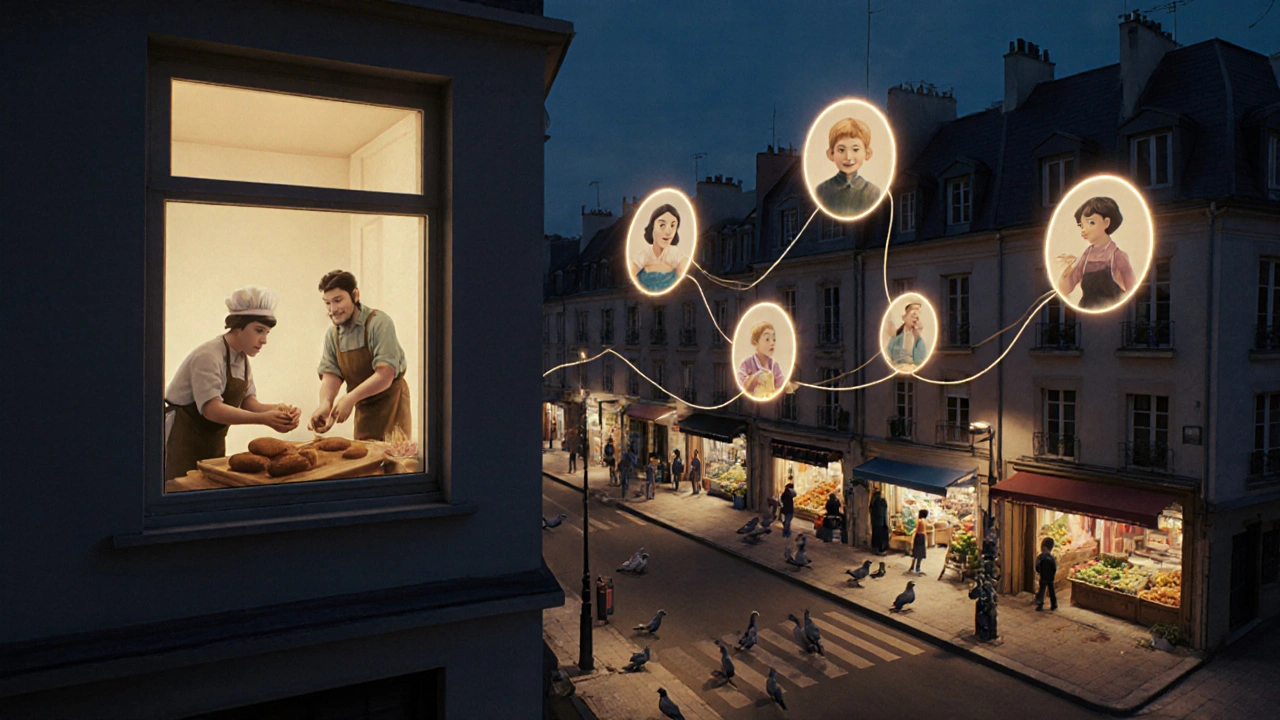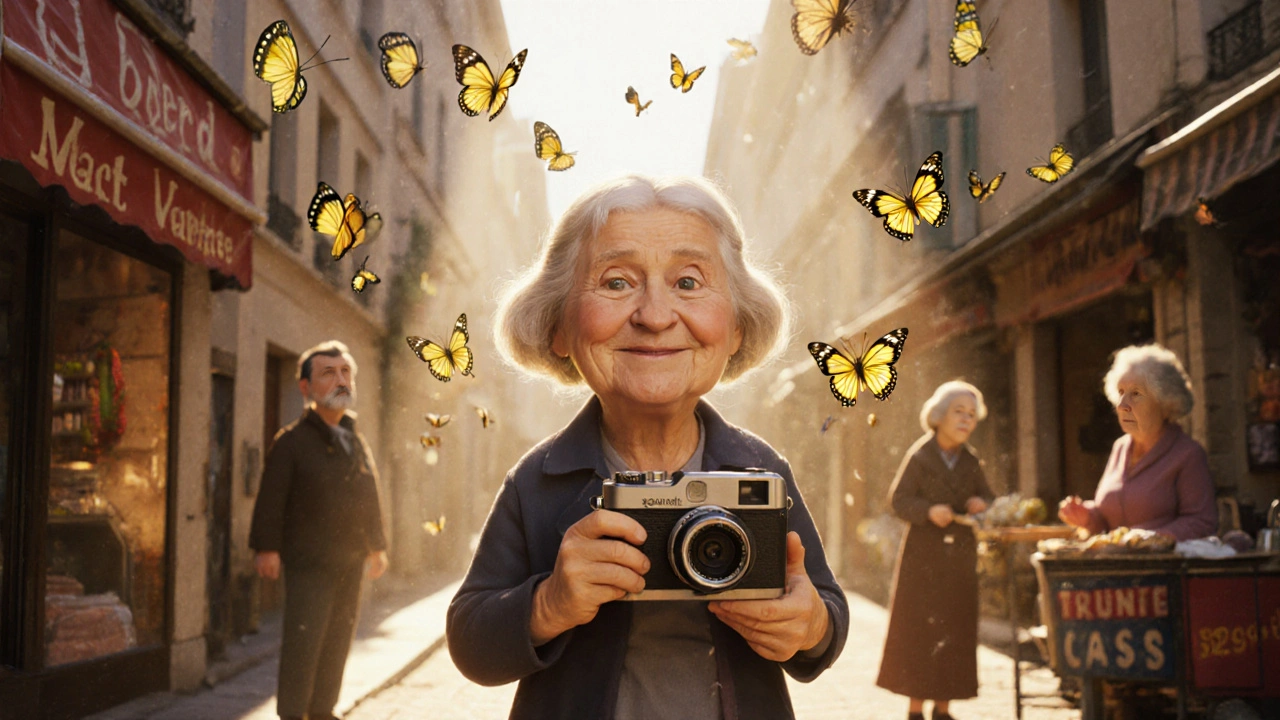Agnès Varda didn’t make movies the way others did. She didn’t wait for permission. She didn’t follow rules. She picked up a camera, walked into her neighborhood, and started filming the people, the light, the silence between words - and turned it all into art. Her films weren’t just watched; they were felt. In a world where cinema was still dominated by rigid narratives and male perspectives, Varda carved out a space where playfulness wasn’t just allowed - it was essential. She mixed documentary truth with fictional dreams, turned personal grief into public poetry, and made feminism feel like a quiet revolution happening right in front of your eyes.
She Didn’t Wait for the New Wave - She Started It
Most people think the French New Wave began with Truffaut’s The 400 Blows or Godard’s Breathless. But in 1955, five years before either, Agnès Varda released La Pointe Courte. It had no studio backing. No famous actors. Just a fishing village in southern France, two strangers in emotional freefall, and a camera that moved like it was breathing. She didn’t call it fiction or documentary - she called it cinécriture: cinematic writing. Every frame was a sentence. Every cut, a comma. She filmed real people going about their lives, then layered in a fictional story about a couple falling apart. No one had done that before. Even Alain Resnais, who edited the film, later borrowed her structure for Hiroshima Mon Amour. Varda wasn’t part of the Cahiers du Cinéma circle. She didn’t write film reviews. She was a photographer. She saw the world in stills - and then learned how to make them move. That’s why her films feel different. They’re not about plot. They’re about presence. The way sunlight hits a wall. The way a woman looks away when she’s scared. The way silence can scream louder than dialogue.Playfulness Was Her Weapon
Varda didn’t make heavy films. She made joyful ones - even when the subject was death, poverty, or loneliness. In Daguerréotypes (1975), she was stuck at home with a newborn. So she tied an 80-meter cable to her electrical box and filmed only what was within reach: the bakers, the grocers, the neighbors who came by to chat. No fancy gear. No location permits. Just curiosity. And what she found? A community. A portrait of ordinary life, stitched together with humor and tenderness. She’d throw a musical number into a film about a woman dying of cancer. She’d let a character in Cléo from 5 to 7 stare into a mirror for 15 minutes - no cuts, no music - just her fear, her breath, her heartbeat. That’s playfulness. Not jokes. Not gimmicks. It’s the freedom to break form because you trust the emotion behind it. Martin Scorsese once said, “The freedom to slip and slide in time, to break down narrative - that comes from Agnès.” And he’s right. Her films don’t ask you to follow. They invite you to wander.Feminism Wasn’t a Theme - It Was the Camera’s Eye
Laura Mulvey wrote about the male gaze in 1975. Varda had already made Cléo from 5 to 7 in 1962 - a film that spent its entire runtime inside the mind of a woman waiting to hear if she had cancer. No man saves her. No man defines her. She’s not a symbol. She’s not a victim. She’s just a woman - anxious, vain, angry, beautiful - trying to survive a moment that feels like the end of the world. Varda didn’t theorize feminism. She lived it. In One Sings, the Other Doesn’t (1977), she showed women organizing, singing, healing, and arguing - not as victims of patriarchy, but as a collective force. She cast real women, not stars. She let them speak in their own voices. She filmed their hands - the hands that cooked, stitched, held babies, held signs. That was radical. And she didn’t stop when she got older. In Varda by Agnès (2019), her final film, she sat in front of a camera at 90 and said, “I’m not making films to be remembered. I’m making them because I still want to see.” That’s feminism. Not a slogan. A way of being.
The Essay Film Was Her Language
You can’t put Varda in a box. She wasn’t a fiction director. She wasn’t a documentarian. She was an essayist - but with a camera instead of a pen. Her films didn’t argue a point. They explored it. Like a diary that happens to be in color. Jane B. par Agnès V. (1988) is a perfect example. It’s about actress Jane Birkin - but not really. It’s a mix of interviews, staged scenes, dream sequences, and songs. Is it real? Is it invented? Varda didn’t care. She was asking: Who is Jane? Who are we when we’re being watched? What does it mean to perform your identity? This style - the essay film - is everywhere now. TikTok videos that blend personal memory with political commentary. YouTube documentaries that jump between decades with no warning. Podcasts that feel like letters to a friend. All of it traces back to Varda. She didn’t invent the form. She invented the feeling of it: the intimacy, the curiosity, the refusal to explain everything.Her Legacy Isn’t in Awards - It’s in How Filmmakers Work Today
In 2021, The Criterion Collection released her complete filmography. It sold 150,000 copies in its first year - the most for any single filmmaker in their history. Why? Because young filmmakers are seeing her work and realizing: I can do this too. Céline Sciamma said Varda taught her that feminism in cinema isn’t just about who’s on screen - it’s about how the image is built. Greta Gerwig’s Little Women feels like Varda’s spirit in 2019: quiet, messy, full of feeling, and utterly unapologetic. Documentary filmmakers like Kirsten Johnson and Lauren Wolkstein say they learned to find beauty in the ordinary because of Varda. And in 2023, a collective of Black women filmmakers - Julie Dash and Mati Diop - made a short film called 80 Meters, directly inspired by Varda’s cable-limited shoot in Daguerréotypes. Film schools now teach her work in 78% of introductory courses. That’s up from 42% in 2015. The Venice Film Festival gives out the Agnès Varda Award to women directors. Google Arts & Culture built an AR experience that lets you walk into her scenes. And in 2024, a major biography will be published with never-before-seen letters and storyboards.
How to Start Making Films Like Her
You don’t need a budget. You don’t need a crew. You need curiosity.- Carry a camera - even just your phone - for a month. Don’t shoot for a story. Shoot for moments: a child laughing, a bus stop bench at dusk, an old man feeding pigeons.
- Try a constraint. Like Varda’s 80-meter cable. Shoot only within your block. Or only in natural light. Or only with one color in frame.
- Interview someone you know - a neighbor, a relative - and let them talk without interrupting. Don’t edit out the pauses. Those are the real moments.
- Blend fiction and truth. Write a short scene about someone you saw on the street. Then film it with real people. Let the lines blur.
- Make a film that doesn’t explain itself. Don’t tell the audience what to feel. Just show them. Trust them to feel it.
Why Her Work Still Matters in 2025
We live in a time of noise. Algorithms feed us fast cuts, loud claims, and easy answers. Varda’s films are the opposite. They’re slow. Quiet. Full of holes. And that’s why they’re needed now. She showed us that you can be political without being preachy. That you can be playful without being trivial. That feminism isn’t about shouting - it’s about listening. To women. To strangers. To silence. Her films don’t age. They deepen. The more time passes, the clearer her vision becomes. She didn’t predict the future of cinema. She just made it possible - one frame, one moment, one playful, fearless decision at a time.What makes Agnès Varda’s films different from other French New Wave directors?
While directors like Godard and Truffaut were critics turned filmmakers who focused on narrative rebellion, Varda came from photography and treated cinema as visual poetry. She blended documentary realism with fictional storytelling from her first film, La Pointe Courte, long before others did. Her films prioritized emotion over plot, stillness over movement, and the lives of ordinary people - especially women - over cinematic spectacle. She didn’t break rules to shock; she broke them to feel more deeply.
Is Agnès Varda considered a feminist filmmaker?
Yes - but not in the way you might expect. She didn’t make films about women’s rights as a political platform. She made films that showed women as full human beings: scared, angry, joyful, confused, and complex. Her 1962 film Cléo from 5 to 7 was revolutionary because it centered a woman’s internal experience over 90 real-time minutes - something no mainstream film had done before. Feminism for Varda wasn’t theory. It was the act of seeing women clearly, without filters.
What is cinécriture, and how did Varda use it?
Cinécriture means cinematic writing - a term Varda coined to describe how all elements of filmmaking (camera, editing, sound, performance) work together as one expressive act. Unlike traditional filmmaking, where roles are separated (director, writer, editor), Varda often wrote, shot, and edited her films herself. She didn’t plan everything in advance. She discovered meaning in the editing room, letting images and sounds connect in unexpected ways. It’s like writing a poem where each word is a frame, and the rhythm is made by silence.
How did Varda’s background in photography shape her films?
As the official photographer for the Théâtre National Populaire from 1951 to 1961, Varda learned to see composition, light, and expression in still moments. That’s why her films feel like moving photographs. She often used still images within her films - like in Cléo from 5 to 7, where photos of the protagonist interrupt the flow of time. She didn’t chase movement; she waited for the right moment to capture it. Her camera didn’t zoom or pan wildly. It observed. That stillness became her signature.
What’s the best Agnès Varda film to start with?
Start with Cléo from 5 to 7. It’s her most accessible film - a clear, emotional journey through one woman’s anxiety over 90 minutes. It’s also the perfect example of her blend of fiction and realism, her feminist perspective, and her use of time. If you want something more experimental, try La Pointe Courte. For a joyful, intimate look at everyday life, watch Daguerréotypes. And if you want to see her reflect on her own life, Varda by Agnès is her final, loving self-portrait.
Are there any modern filmmakers influenced by Varda?
Absolutely. Céline Sciamma (Portrait of a Lady on Fire) and Greta Gerwig (Little Women) have both cited her as a major influence. Documentary filmmakers like Kirsten Johnson and Lauren Wolkstein use her constraint-based methods. Even TikTok creators making personal essay videos - blending memory, music, and social commentary - are channeling her spirit. The Agnès Varda Award at Venice, given to women directors since 2020, proves her impact is institutional now, not just inspirational.

